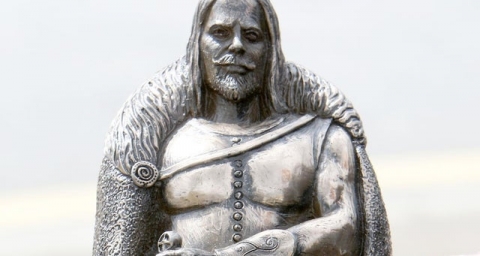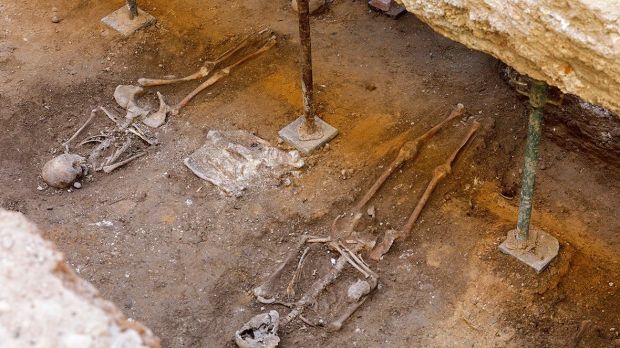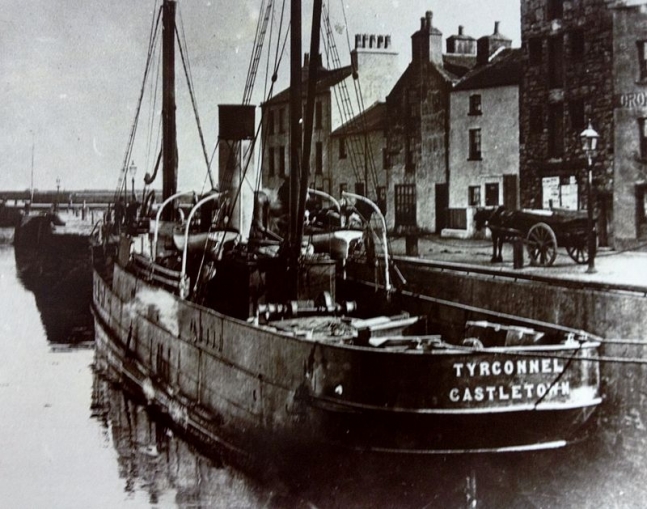Search in Spain for remains of famous sixteenth-century Irish Chieftain

Archaeologists in north-western Spain believe they have discovered the burial place of 16th century Irish chieftain known as Red Hugh O’Donnell (30 October 1572 – 10 September 1602). Hugh Roe O'Donnell (Irish: Aodh Ruadh Ó Domhnaill) was a ruler of Tyrconnell. Tyrconnell (Irish Gaelic: Tir Chonaill) was an independent Gaelic state in Ireland. Red Hugh and his father-in-law Hugh O’Neill fought the Nine Years’ War against the English and sought aid from Spain.
The Kingdom of Tyrconnell was said to have been founded in the fifth century by Conall Gulban, a son of Niall Noígíallach. Niall Noígíallach was an Irish King known as Niall of the Nine Hostages. He got his name from his strategy of taking hostages in his battles with other chieftains. There are a number of present day Irish names which claim a link to Niall and his dynasty of Irish chieftains. They held sway in Ireland for several centuries.
The resistance against English intervention in Ireland in the late 16th century was led by Aodh Mór Ó Néill and Aodh Ruadh Ó Domhnaill. The family O’Donnell was in alliance with the O’Neill’s (also descended from Niall Noígíallach). Initially the forces of O’Donnell and O’Neill had achieved some significant successes against English forces. Including at the Battle of Contibret in March 1595, the Battle of Yellow Ford in August 1598 and the Battle of Curlew Pass in 1599. However, with increased English forces, O’Donnell and O’Neill were forced more on the defensive. Leading in 1602 to Aodh Ruadh Ó Domhnaill’s defeat in the Seige of Kinsale.
Following defeat at Kinsale, Aodh Ruadh Ó Domhnaill went to Spain where he died in 1602. Red Hugh had travelled to Spain to ask King Phillip III to give more military support to the Irish. He died before his plea was answered. His body was taken to the king's palace in Valladolid, once the capital of Spain, where palace guards and state officials attended his funeral. He was buried in Valladolid's Chapel of Wonders and archaeologists believe they have unearthed the walls of the chapel and are "close" to discovering the remains of Red Hugh. A number of sets of bones have already been discovered.
Following the death of Red Hugh he was succeeded by his brother Rory O'Donnell (Irish:Rudhraighe Ó Domhnaill), the last King of Tyrconnell. The end for Tyrconnell finally came in 1607 in what is known as ‘The Flight of Earls’. On 14 September 1607 Rudhraighe Ó Domhnaill and Aodh Mór Ó Néill, their power severely depleted and under threat of arrest by King James, left Ireland. They had hoped to garner military support, particularly from Spain, in support of their return to Ireland. However, power balances and politics were altering in Europe and they were never to return to their native land.
The departure of the Gaelic Earls from Rathmullan on Lough Swilley in 1607 marked a turning point in the history of Gaelic Ireland. Following The Nine Years War (1594-1603) there was a continued and provocative vendetta against the Earls and religious persecution. Forced into leaving Ireland the Earls dreams of returning home with forces to reclaim their lands was never to be. However, the Gaelic Kingdom of Tyrconnell was gone but never forgotten.
Image above: Sculptor'simpression of Red Hugh courtesy of Derry Journal.
Images below:
Two of the eight skeletons uncovered so far by archaeologists in Valladolid.
Cargo vessel SS Tyrconnell named after the famous Gaelic kingdom berthed in Castletown harbour. Registered in Castletown (Manx: Balley Chashtal) and operated between Irish Sea ports by the Isle of Man Steam Packet Company until 1932.








